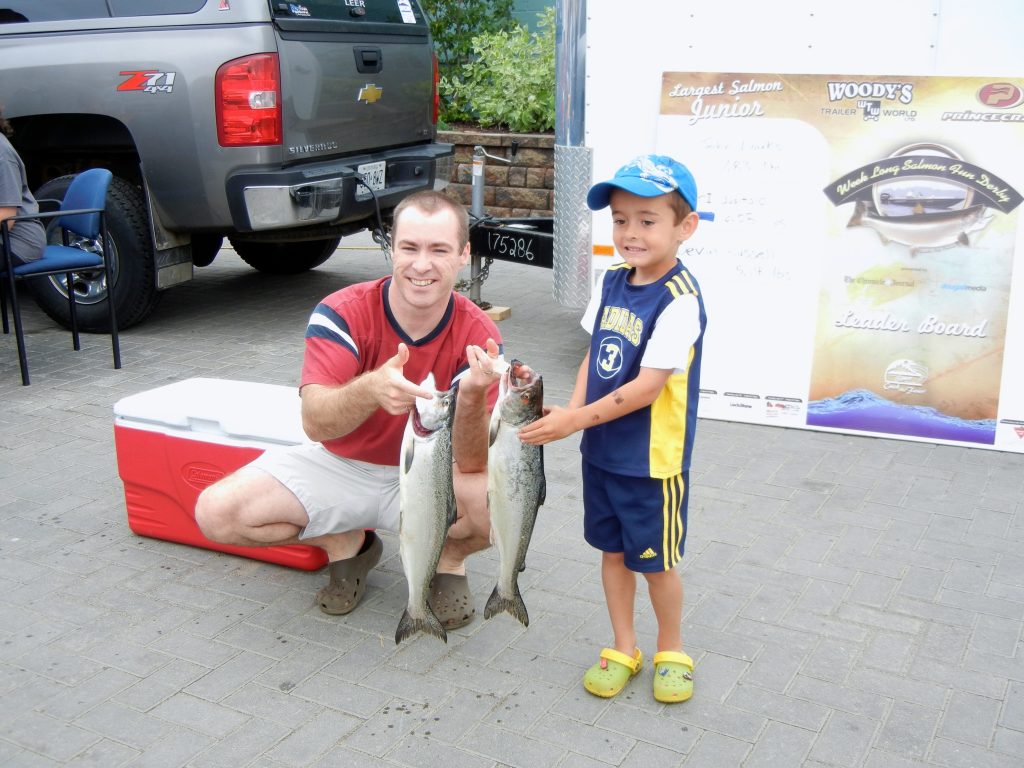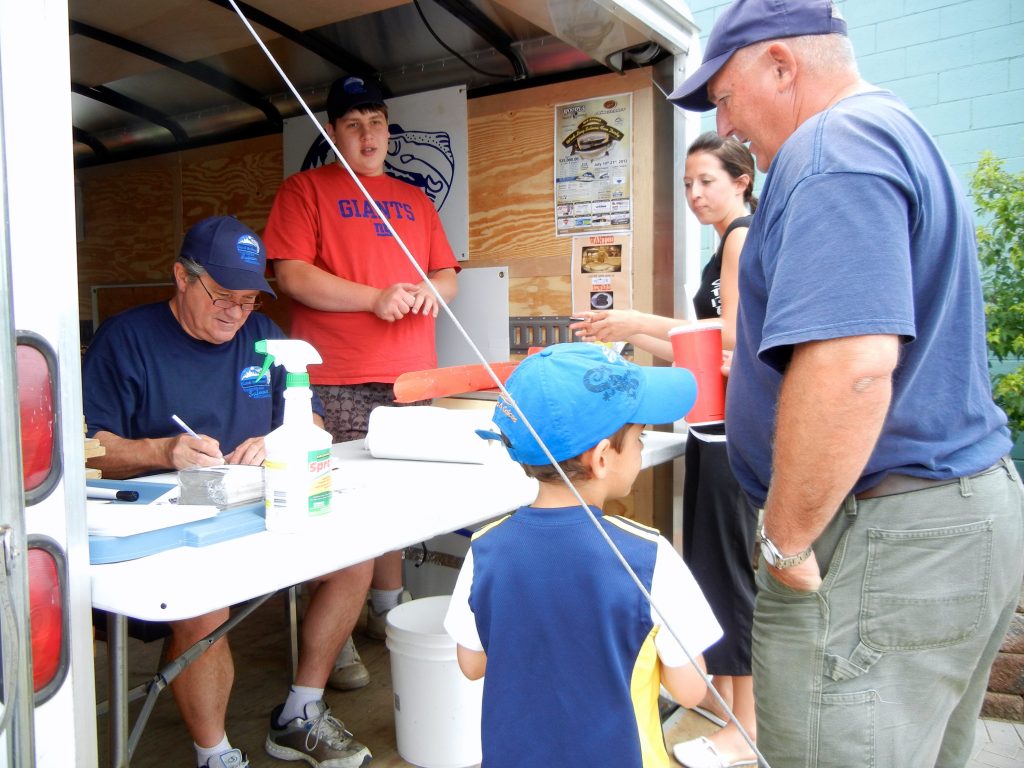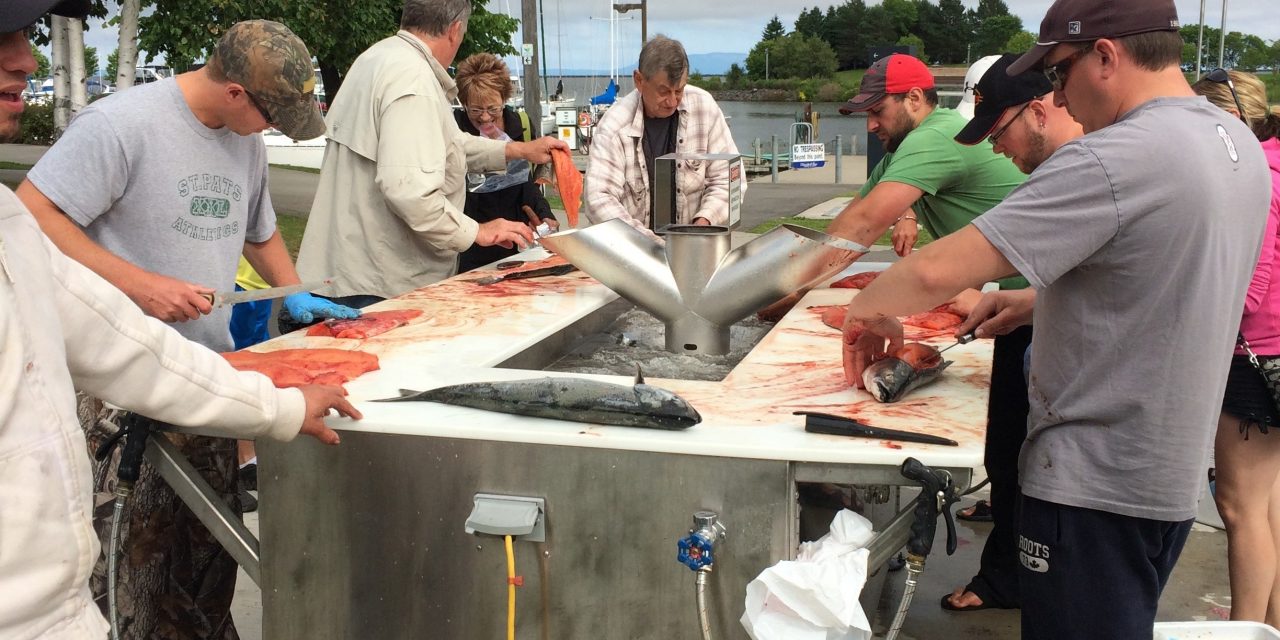Not Your Average Fish Story
By Wendy Wright
Since 1987, the Thunder Bay Salmon Association has been in action. To keep stocks of Chinook Salmon viable for sportfishing in Lake Superior, the Association has endeavoured to accomplish this to the tune of more than four million fish. As the President of the Association, Ernie Ukrainec, says “our goal and mission is to have a viable Chinook salmon sport fishing industry, and this is the only operating salmon hatchery on Lake Superior.”

The Thunder Bay Salmon Association began with a group of sport fishers that wanted to ensure a healthy supply of Chinook salmon for everyone interested in the sport. This non-profit organization is staffed by volunteers and numerous events and the big summer fish derby support the monetary needs of raising and releasing the salmon fingerlings. When fisher folks catch a clipped salmon from the hatchery, they receive a special pin for that as well.
Each October eggs are gathered near Nipigon and are reared until June when they are released into the Kaministiquia River. During this time, volunteers visit the hatchery daily for feeding, cleaning and ensuring the babies are growing well. From egg to fry to fingerling size (4-5 inches) and then their big adventure begins when the babies are released into the Kaministiquia River. “It’s kind of like babysitting through those months to make sure, on a daily basis, that the fish are growing and healthy,” Ukrainec says. “The tanks need to be cleaned, shells picked out, temperature checked. It is a daily exercise for those of us involved.” The hatchery is located on leased Ontario Power Generation land near Kakabeka Falls.

“The Chinook is a very exciting fish to catch and it’s a good eating fish also,” says Ukrainec. It is a popular fish to seek for those all over Lake Superior, both in Canada and into the U.S. “A lot of clipped fish are caught across the border from Two Harbours onward.” The number of released fingerling size fish fluctuates from 60,000 to 100,000 per year.
Last June, the Salmon Association released 105,000. There is an approximate 90% survival rate among these eggs as opposed to the 10% egg survival rate from natural spawning. The club is helping the species to thrive in a sometimes murky natural environment.
The most recent Fish Derby took place last month and was one of the biggest events and fundraisers for the club taking place throughout the year. A raffle on September 1 is another.
For more information, visit the thunderbaysalmonassociation.com and find them on Facebook at @thunderbaysalmonassociation














